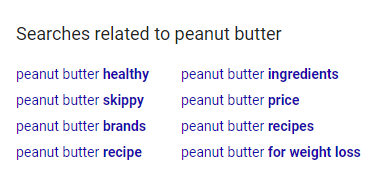The combination of semantics (the science of meaning in language) with search engines that process billions of queries seems a very natural one.
Semantic search has been effective, too; by understanding the intent of a query and the context of the user, the accuracy of results on search engines like Google and Bing has increased significantly.
Search engine results pages today look markedly different to their earlier iterations and, with improvements in local search, voice recognition, and machine learning, they will continue to change over the next few years too.
There is a lot of fascinating theory behind all of this, but we can sometimes focus on this to the detriment of our work today.
Significant algorithm updates like Hummingbird, or the more recent launch of RankBrain, have a big impact on users. As marketers, we need to know exactly what this means for our strategy, our expectations, and our campaign measurement.
As such, this article will focus on some real-world examples of semantic search and provide a practical framework to help marketers avail of the opportunities it brings.
Semantic search in action
Let’s start with a simple example to shed light on how semantic search works. We’ll use a common, everyday search query like [will smith]. This screenshot is what I see above the fold on desktop:
When Google processes this query, it recognizes instantaneously that I am searching for the actor and all-round entertainer Will Smith, but also that the intent of my search is unclear. Therefore, it serves a varied array of options for me to click on. I may want to read news about the Fresh Prince, I may want to see his filmography, I may want to see if he has any new albums in the pipeline. Perhaps I want to see all three.
As is highlighted on the right-hand side in the knowledge panel, Google can retrieve all of this information from its index of 808,000,000 Will Smith-related results, but also from its own vast database of information about noteworthy people and institutions.
I can help Google out here by refining my search. Next, I ask [who is he married to]:
As we can see, results are pulled to the top of the results to highlight his current and former spouse.
This is a demonstration of conversational search in action.
Just like a person would in a conversation, Google knows the ‘he’ in my question refers to Will Smith. I don’t need to state this again. Google also needs to know what the connection is between ‘he’ and both Jada Pinkett Smith and Sheree Zampino.
These may seem like minor changes, but they hint at a fundamental shift in how Google works. Factor in voice search and it is easy to see how important this conversational element is.
If we extend this out to ask about Will Smith’s music, we can start to conceptualize just how complex Google’s network of interconnected entities is:
Asking what an artist’s best song is strays into the realm of subjectivity, so Google pulls the track listing from Will Smith’s greatest hits. Or at least, I hope that’s what’s happening here. If Google genuinely thinks ‘Girls Ain’t Nothing But Trouble’ is Will Smith’s best song, I’ll lose faith in them.
In terms of natural language processing, however, this search query is now quite convoluted. In this last instance, Google has had to keep track of who we’re asking about, having deviated once already to ask who his spouse is; then pull an indirect, best-fit answer to my question about Will Smith’s best song.
Let’s try one more, then we’ll give Google a break:
You get the idea.
We’ve come an awfully long way from the exact keyword matching of just a few years ago.
Furthermore, all of this serves an important illustrative purpose and it’s one that matters for anyone that wants to rank via SEO in 2017.
Why does it matter for brands?
The technology that underpins the above answers is utilized for all queries, so it is very significant for brands. Just launching a page on a website and ‘optimizing it for SEO’ clearly isn’t going to cut it any more.
Let’s say, for argument’s sake, that I run a peanut butter e-commerce site. Logic dictates that I will want to rank first in organic search for [peanut butter]. The results from my location look like this:
We can see the same principle applied to the earlier Will Smith query, but with very different results – both in their format and their content.
I may want to rank for [peanut butter] with my e-commerce site, but unless I have a physical store I can use to rank via local listings, the chances look slim. There are a few organic results above the fold (an anomaly these days), but only one brand that actually produces the product. There is a recipe with an accompanying image, however, and a link to more images, so perhaps these formats would be a more appropriate, achievable way to get onto page one.
At the bottom of this search results page, Google actually provides some strong clues about what people are really looking for when they search for peanut butter:
These related searches are more specific and give us a good idea of which topics we should cover on our site. There is a nice variety of different topics here, all of which are worthy of more investigation.
To pick one, we’ll go with the ‘peanut butter ingredients’ route. If I search for [what is in peanut butter?], Google serves the following results:
We can already sense some opportunities for an e-commerce site either to branch out is content strategy to answer questions, or potentially to partner with a site that already ranks well for these queries.
The ‘People also ask’ list is a fantastic resource for users and SEO marketers, but we should be aware of just how dynamic that list is. It take on a concertina effect and expands based on our interactions with it.
Once more, the need to approach SEO in 2017 with an open mind is evident. We can’t control how this list will function at scale; all we can do is put ourselves in the best possible position to answer common questions.
In the screenshot below, there are two examples of how the list changes based on the questions a user clicks on. On the left-hand side, I have clicked on a protein-related question and, therefore, Google provides more protein-based questions below the original list of four. On the right-hand side, I have initially clicked on ‘Is eating peanut butter good for you?’
The ‘People also ask’ box ends up looking completely different in these two instances, which both began with the exact same query.
Note that a lot of similar questions are phrased slightly differently, but Google knows that the underlying meaning is essentially the same. As such, we don’t need to slavishly devote ourselves to answering the exact questions that receive the most searches in order to rank.
This brings with it opportunities and challenges, outlined in the four-step process below.
Four steps to rank via semantic search
We can’t control exactly which queries we will rank for, but we can certainly increase the probability that we will improve our organic visibility if we work through these four stages.
Research
Google provides a lot of useful information via suggested search, ‘People Also Ask’, and related searches. You could use these to collect a list of direct questions that you can be certain people are asking, as a starting point.
Although keyword-level search volumes are impossible to obtain with any serious degree of accuracy now, there are still some useful tools that provide insight into search trends. Google’s own keyword planner is quite limited for SEO nowadays, but you can use PPC-based insights to help shape your content strategy.
There are also tools like Moz’s keyword planner, which are very helpful for shaping broader SEO strategies while still keeping an eye on where the search volume is.
Personally, I find Answer the Public to be a useful guide when trying to figure out all the interrelated questions and pain points consumers have when thinking about a product or service.
Collate a list of all the navigational, informational, and commercial queries related to your site, then sub-categorize them by their semantic links to each other.
From here, you can start thinking about how to structure this to ensure maximum SEO visibility.
Structure
Site structure is a fundamental aspect of semantic search performance.
You should think of your products or services as entities that each contain a multitude of connotations and associations. Build those connotations in vertically to cover a range of user needs, and link them to other entities horizontally in the site taxonomy. By mapping keyword groups or common questions to landing pages, you can ensure that each URL on your domain has a defined purpose.
Changes to site structure normally require buy-in from multiple stakeholders, so I would advise visualizing your proposed site taxonomy as early as possible.
How you present this will depend on your intended audience and how they think. For more logical thinkers, Writemaps is a great way to produce simple but effective site structure visualizations.
If you require a more conceptual approach to emphasize semantic relationships, or even the amount of internal link value you want to send to each area of the site, you can use word cluster software like Smartdraw to get your point across.
Implement
The next step is to populate your site structure with content that meets user needs. This is an effective way to think about this, because consumer needs and desires remain relatively constant, and the ideal functioning of a search engine will always seek to satiate those underlying motivations. So if you can create content to cover every aspect of the typical consumer journey, you will be rewarded.
Bear in mind what we have seen from the example above, too. Multimedia results are hugely significant, so try to include a range of assets that fit users’ (and Google’s) expectations. Most rank tracking software providers now contain products that allow us to see which types are most prevalent for different types of queries, so use these to guide your efforts.
Measure
Measurement has become a significant challenge, viewed through the lens of our old performance indicators like ranking positions, for example. It is very difficult to track individual ranking positions, as they are never static. Search results pages act like living organisms now, so we need to take a broader perspective on measurement.
Track the metrics that matter most to your business, rather than just looking at rankings. The aim should always be to use SEO to affect those metrics anyway, so incorporate them within your campaign tracking.
Moreover, the bigger ranking software companies have created their own metrics to measure SEO visibility which, when combined with what you see in your analytics dashboard, will provide a lot of insight into whether your strategy is working.
We can’t approach measurement like we used to, but we can still tell when SEO is making a positive contribution.
For more on semantic search and its ever-changing impact on the SERP, check out our round-up of five important updates to Google semantic search you might have missed.
source https://searchenginewatch.com/2017/07/17/semantic-search-what-it-means-for-seo-in-2017/









No comments:
Post a Comment